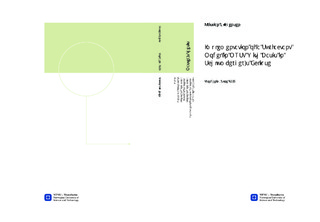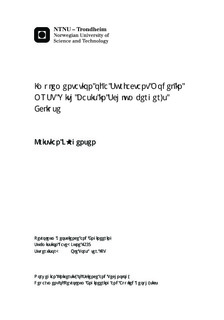| dc.description.abstract | In conjunction with the Open Porous Media (OPM) Initiative, SINTEF AppliedMathematics in Oslo have developed the Matlab Reservoir Simulation Toolbox(MRST) with the purpose to function as a an efficient testing platform for im-plementation of new solution and discretisation methods in reservoir simulationsapplications. MRST has been released as an open-source program under the GNUGeneral Public License (GPL), and in this thesis, the author intends to mod-ify the existing source code of MRST release 2012b to implement a surfactantmodel as an extension to a black-oil framework of equations. The governing equa-tions are evaluated using the finite-volume method and the system of equationsis solved fully-implicitly using the Newton-Raphson method. The model createdin this thesis is based on the surfactant model in Eclipse r which is described inthe Eclipse Technical Description.A central part of MRST is the use of automatic differentiation. This is a wayto compute function derivatives of coded equations without the tedious, explicitcoding of derivative with respect to each separate variable. This is useful whenimplementing new physics to the already existing framework of equations, as theJacobian matrix in the Newton-Raphson method can be obtained automaticallyfor newly implemented equations, simply by associating them with a specificMatlab class. A feature of MRST is that it supports industry standard inputformatting, so the surfactant model specific keywords in Eclipse r have also beenimplemented in MRST to allow for an easy transition when comparing the resultsfrom the two simulation programs.Based on observations made, the authors concludes that the work of implementinga surfactant model to an existing black-oil formulation for general grids in MRSThas been successful. The model compares well with Eclipse r and predicts largelythe same behaviour in terms of surfactant distribution, saturation and pressureprofile along with production data. However, it is not able to fully replicate theresults from Eclipse r . The reason for this is largely undetermined, but the authorpoints at a few key observations: 1) The observed smearing of the results in thesurfactant profile is indicative of differences in the numerical solution betweenEclipse r and the implemented surfactant model. This difference results in ahigher degree of numerical dispersion in the implemented surfactant model thanfor Eclipse. 2) The implementation of fluid transport properties, perhapsrelative permeability especially, is also pointed out as a reason for the observeddifferences.The author means that the model is a good foundation for further research anddevelopment in surfactant injection modelling. | nb_NO |

